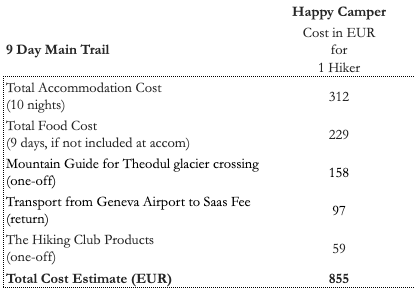The idea of hiking through the Alps and then sleeping under the stars each night sounds pretty dreamy, right? It’s no wonder that plenty of hikers choose to take their tent and camp on the Tour of Monte Rosa.
However, it's not so straight forward. Unfortunately it’s not possible to just camp/bivouac anywhere along the trail. The Tour of Monte Rosa travels through 2 countries - Switzerland and Italy - and 3 provinces - Valais (CH), Piedmont (IT) and Aosta (IT) - all with different rules about wild camping/bivouacking. Also, the majority of high elevation sections of the trail are within private ski resorts - Zermatt, Breuil Cervinia, Monte Rosa, Macugnaga, Saas Fee and Grachen.
Therefore, there are 3 camping options on the Tour of Monte Rosa:
Campgrounds with amenities
Camping next to mountain huts
Bivoacking (also referred to as wild camping)
Hikers will need to use a combination of these options along the trail.
It starts to sound a little complex and difficult right? Let me break it down what’s possible so you can move out of the research phase and onto the much more fun planning phase! Here’s what I’ll cover in this blog post:
But…if you are already convinced that camping is the way to go, check out our trip planning app which provide you all the details on where to camp, how to book/reserve, how much it will cost and how to navigate on the trail.
JOIN ONE OF OUR ONLINE EVENTS
Where can I camp on the tour of monte rosa?
Unless you want to make big deviations to the standard Tour of Monte Rosa trail, it isn’t possible to camp every night. This is due to restrictions from local governments and private ski resort areas. Therefore, the best option is to choose an itinerary that has end of day locations at either a campground or mountain hut that allows camping.
1. Campgrounds with amenities
Source: Camping Schonblick
There are a number of campgrounds located in alpine villages and towns along the Tour of Monte Rosa. The cost for 1 adult is about 20 EUR per night and they offer facilities such as hot showers, kiosk/cafe and wifi. Some also have a laundry room (important every few days to wash those smelly hiking clothes!). In general, no reservations are needed for a small tent site.
2. CAMPING NEXT TO MOUNTAIN HUTS
There are a few mountain huts that allow a small number of tents to be pitched each night next to their hut. This is only possible at a few rifugios/refuges, but is a great way to use their hot showers and enjoy the warm meals for dinner and breakfast. Due to COVID-19, the mountain huts require a reservation to be made at least 48 hours before arrival.
3. BIVOUACKING (OR WILD CAMPING)
The general guideline is that you can bivouac overnight (dusk to dawn) above the forest line, on alpine pastures and in rocky terrain. However, each of the 3 provinces that the Tour of Monte Rosa passes through have local regulations on overnight bivouacking.
Updated: September 2020
Valais (Switzerland): According to the Swiss Alpine Club, bivouacking above the forest line. But there are areas that are strictly forbidden:
National Parks
Game/Wildlife Parks
Nature Reserves
Designated Wildlife areas
These areas can be identified using the map from Swiss Topo which allows you to apply specific filters for each of the protected areas.
Additionally, the Valais department of forests, rivers and landscapes has a website which lists all their local rulings on additional protected areas for both the canton and their local municipalities.
Piedmont (Italy): According to the local government website, bivouacking is allowed as long as it does “not exceed 48 hours, of single tents or other single mobile means of stay, in locations where they are not available places in authorized camping.”
Aosta (Italy): According to the local government website, bivouacking is allowed “only above 2,500 meters above sea level, from sunset to dawn.”
So - what does this mean? To adhere to all of the above guidelines, there are only a few places along the trail that you can bivouac. Make sure to choose the appropriate place, otherwise you could be moved on, or worse - fined.
We have incorporated all 3 camping options (Campgrounds, nearby mountain huts and some permitted bivouac locations) into our trip planning app for the Tour of Monte Rosa.
How much does it cost to camp the Tour of Monte Rosa?
Using my experience and actual costs as of January 2024, I’ve calculated that once you arrive in Geneva Airport, it will cost you 855 EUR per person to camp and hike the Tour of Monte Rosa.
This is based on a standard 9 day route and what you can expect by planning your trip using our self-guided products. It includes private mountain guide for Theodul glacier crossing, transport to/from the trail, accommodation at campgrounds and huts (when needed) and food from combinations of supermarkets and huts.
I’ve written a detailed blog post that breaks down and explains all the different costs.
What kind of weather can I expect while camping on the Tour of Monte Rosa?
If you plan on hiking between start July and mid September, the trail should be “mostly” snow free. However, you need to be prepared for snow at any time of the year, even the middle of summer!
The highest point of the Tour of Monte Rosa is Theodulpass at 3,297m / 10,817ft. The standard route has 6 mountain passes above 2,700m (8,850ft) where the high alpine weather can change quickly.
Nights in the high alpine sections of the trail can be as cold as -5C/23F between June and September - I would recommend preparing for -10C/14F with thermals, sleeping bag liner, sleeping bag.
Mid June 2019: Still plenty of snow on the trail.
If you are hiking before mid July, I recommend taking crampons. As a guide, if you are hiking before mid-June then I also recommend carrying an ice axe for the mountain passes. These dates will slide earlier or later depending on how big the winter has been and quickly the snow is melting each season.
You can read the 2019 trail report here for more details on conditions.
How difficult is it to find water on the Tour of Monte Rosa?
Water fountain along the Europaweg section
There are lots of places to fill up on water along the trail. Most villages have water fountains free for public consumption. Outside of villages, you are never far from glacier fed streams or rivers, however, you should be aware that some run-offs are filled with erosion. I recommend taking a 2 litre water bladder and keeping it topped up at every water location, which you can find on all our mobile maps.
Where can I find camping supplies on the Tour of Monte Rosa?
If you start your hike in either Saas Fee or Zermatt, you will be able to buy stove fuel, freeze-dried meals and items for your first aid kit. Here are some sports store locations:
Saas Fee & Zermatt: Millet Sports
Saas Fee: Olympia Sports
Saas Fee & Zermatt: Intersport
Zermatt: Bayard
There are no other locations with freeze dried meals on the trail, however, there are supermarkets and convenience stores where you can pick up fresh fruit/veg, instant rice, pasta, etc. Also, most campgrounds have a small store that sells food, toiletries and other basic items.
WRAP UP
The ability to camp while hiking the Tour of Monte Rosa is possible, however the rules and regulations across the 3 provinces make it difficult to find the right locations. The best option is to use a combination of campgrounds, near mountain huts and wild camping to complete your trip.
We’ve launched a trip planning app that allows campers to create their own Tour du Monte Rosa hiking plan using permitted camping locations and campgrounds with ammenities along the trail.






